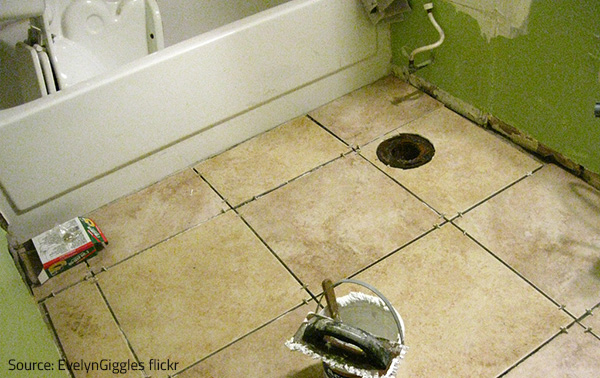Factors Behind Water Deterioration in the Bathroom
Factors Behind Water Deterioration in the Bathroom
Blog Article
Just how do you really feel when it comes to How to Repair and Prevent Bathroom Water Damage??

Water damage typically takes place in the washroom as a result of the water used everyday. In some cases, the damages could be a little mold and mildew from the shower. Various other times, it's massive damages on your flooring. Whatever it is, it is always good to recognize the cause as well as prevent it before it takes place.
This guide will go through several of the typical sources of water damage in the bathroom. We will certainly likewise analyze what you can do to avoid these causes from damaging your bathroom. Let's dive in.
These are the typical factors you would have water damage in your shower rooms as well as exactly how you can find them:
Excess Moisture
It's cool to have that lengthy shower and sprinkle water while you hem and haw as well as imitate you're carrying out, yet occasionally these acts can trigger water damage to your washroom.
Sprinkling water around can create water to head to edges and also create molds. Enjoy exactly how you spread excess dampness around, and also when you do it, clean it up to prevent damages.
Splits in your wall tiles
Bathroom wall surface floor tiles have actually been specifically developed for that function. They safeguard the wall from dampness from individuals taking showers. Nonetheless, they are not undestroyable.
Often, your shower room wall ceramic tiles crack and permit some wetness to seep right into the wall. This could potentially destroy the wall if you do not take any type of action. If you discover a crack on your wall floor tiles, repair it right away. Don't wait up until it ruins your wall.
Overruning bathrooms and sinks
As human beings, occasionally we make blunders that might trigger some water damage in the bathroom. For example, leaving your sink faucet on could cause overruning and also damages to various other parts of the restroom with moisture.
Also, a malfunctioning toilet could create overruning. As an example, a broken toilet manage or various other parts of the tank. When this happens, it might harm the floor.
As soon as you discover an overruning sink or commode, call a plumber to help handle it quickly.
Burst or Dripping Pipelines
There are numerous pipelines carrying water to different parts of your restroom. Some pipelines take water to the toilet, the sink, the faucets, the shower, and many other locations. They crisscross the little location of the shower room.
Occasionally, these pipelines can obtain corroded and ruptured. Other times, human activity might cause them to leak. When this occurs, you'll locate water in the edges of your restroom or on the wall surface.
To find this, look out for bubbling walls, molds, or mold. Call a professional emergency situation plumbing professional to fix this when it happens.
Roofing system Leakages
Occasionally, the problem of water damage to the restroom might not originate from the washroom. For instance, a roof covering leak might trigger damages to the shower room ceiling. You can find the damages done by taking a look at the water discolorations on the ceiling.
If you discover water stains on your ceiling, inspect the roof covering to see if it's damaged. Then, call an expert to help address the problem.
Verdict
Water damage to your restroom can be bothersome. Nonetheless, you can handle it if you avoid several of the reasons stated in this overview. Call a professional emergency situation plumbing if you notice any extreme damage.
How to Prevent Water Damage in Your Bathroom?
Water damage repair is an expensive, meticulous, and lengthy process. Unfortunately, bathrooms are the most susceptible rooms to water damage due to toilets, showers, and sinks. Pipes and fixtures wear out over time and are not immune to damage. But all is not lost, as there are ways to prevent water damage from occurring in your bathroom.
Check Your Plumbing
Nothing lasts forever, especially pipes, which can rust and begin leaking over time. You should periodically conduct pipe inspections and pay attention for any musty smells or water stains that may indicate you need water damage repair. Here are some things to check:
Frequently test valves for your toilet, shower, and sink to ensure they are properly working. Check faucet supply lines hidden under vanities and replace when needed. Replace cracked or deteriorating caulking along sinks, tubs, and showers. If you notice a clog in your sink, call in a professional. Since you can’t check the pipes in the wall, keep an eye out for stains, drywall bubbling, musty smells, and excess moisture; if the bathroom is on a second level, check the ceiling of the room directly below for these signs. Don’t Overwork Your Toilet
One of the most common reasons bathrooms need water damage repair is due to overflowing toilets. Save yourself the hassle of cleanup by being mindful and not pushing your toilet to extreme limits. If you have young children, it is especially important to keep an eye on them when they are in the bathroom and to teach them how to avoid clogging the toilet. Here are some more tips to help prevent your toilet from overflowing:
If you have a septic tank, only use septic-safe toilet paper Do not flush anything down the toilet besides toilet paper; items like diapers and sanitary napkins will clog the piping Pay attention to your toilet’s water level: If it’s low, it could mean it is partially clogged or that there is a crack in the toilet bowl https://www.alure.com/home-improvements-blog/resources/how-to-prevent-water-damage-in-your-bathroom

I found that blog post on How to Repair and Prevent Bathroom Water Damage? when scouting around the search engines. Make sure you take a moment to share this page if you enjoyed it. Thanks for your time. Visit us again soon.
Best decision? Contact. Report this page